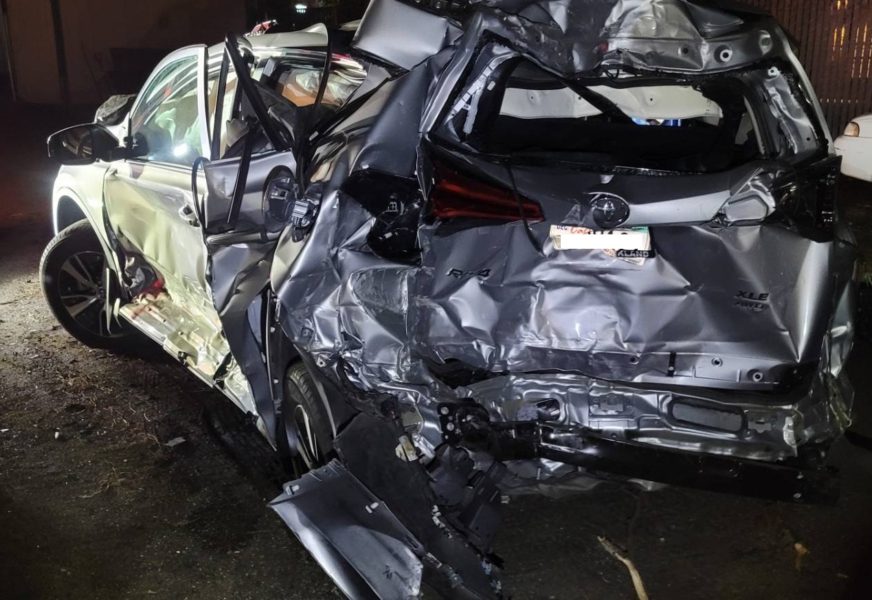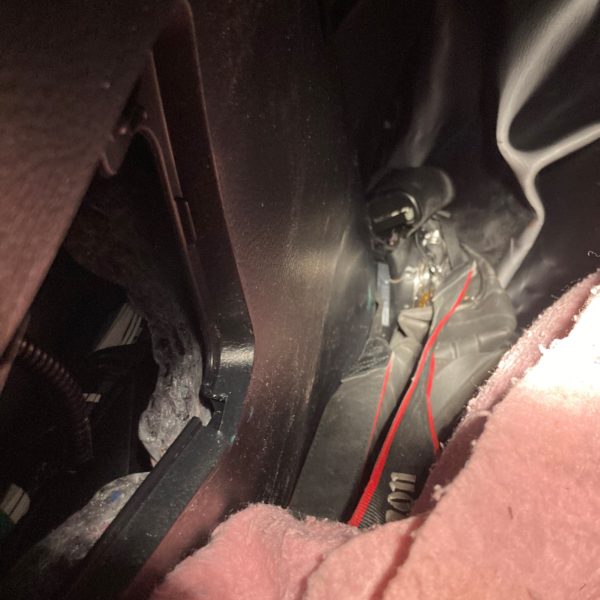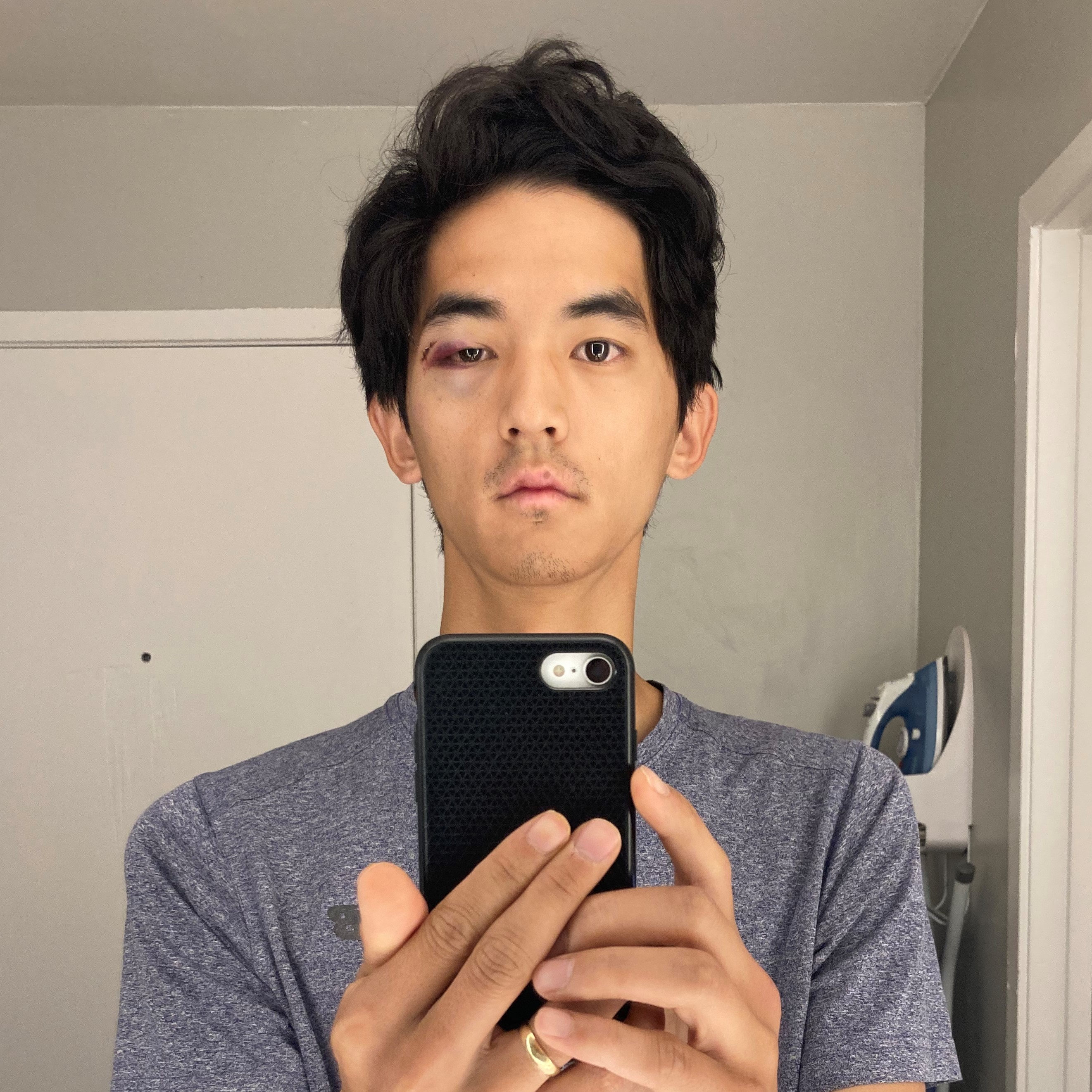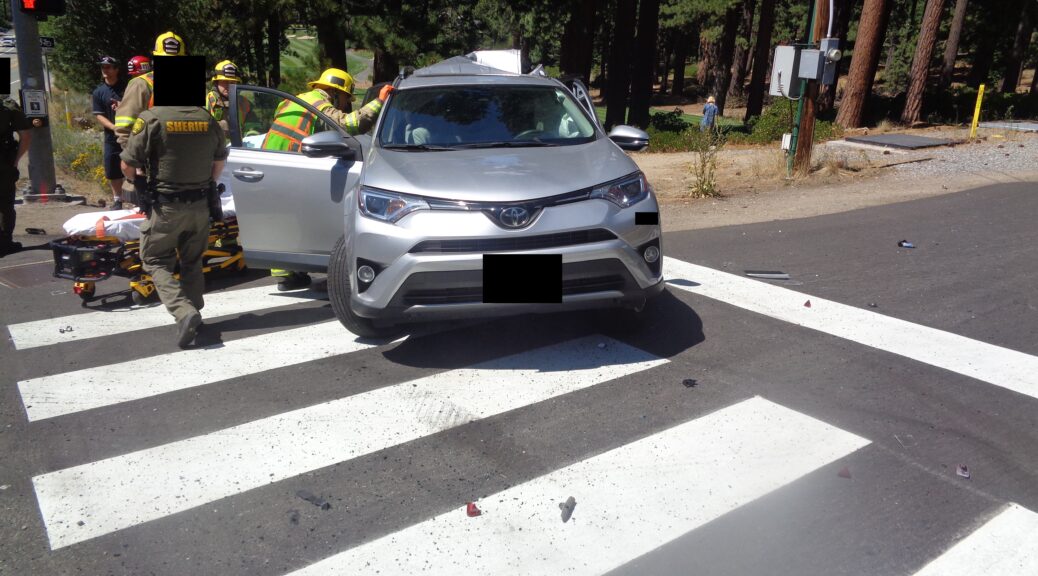Note 12/28/24: Publishing this previously private post as a backdate
Katie and I were on a short but pleasant two-day vacation to Lake Tahoe. We enjoyed a nice long lakeshore day hike, a beachfront dinner, and a gentle morning kayak paddle. We were doing a quick drive toward our last vista. While stopped at a red light, Katie and I were rear-ended by a semi truck going about 35 mph downhill, propelled forward into a major intersection where we were t-boned by an SUV.
There was no warning, no screeching brakes, no time to have my life flash before my eyes. Suddenly, with a deafening crunch, there was nothing at all to see. There was an excruciating sensation of having my breath—or worse, my life—crushed out of my body as my arms and head were ripped off. With a second deafening crunch, I was tossed like a rag doll in every direction simultaneously, along with Katie and everything else in the car.
Then, Katie’s voice emanated from my right, groaning in pain, calling my name, asking if I was okay. My face and both my hands were already dripping in blood, and something was vaguely wrong with my left eye. Momentarily complete, utter, disorientation.
Observations, reasoning, and conclusions came in a jumble. My left nostril was the source of the bleeding, so I applied pressure. My driver’s door was caved and draped with a ragged curtain of airbags. Katie could move and her seat looked undamaged. Someone was already at her window asking if we were okay. I didn’t register what was visible through the intact windshield nor did I register the words “car crash,” but I understood. I felt the low rumble of our still-running engine, and the first coherent thought I had was to turn it off.
The first responders asked us orientation questions and helped Katie out of the car. As minutes passed, Katie’s pain worsened and attention waned. She almost fainted. Meanwhile my focus sharpened, probably thanks to medical training. I surveyed my body, noting intact visual acuity and conjugate gaze, slowing epistaxis with pressure, neck/esophageal bruising, right wrist pain without deformity, and no meaningful thoracoabdominal injury. When they couldn’t open my crushed door, I hopped over the center console to get out. I surveyed the scene, our car, spun backwards and 25 feet from where we’d stopped, its trunk completely crushed with more than two feet of intrusion, and the driver’s side with a second impact impression. In our original position was a looming laden semi truck. Traffic was stopped in all four directions. A red SUV in the middle of the intersection had moderate front-end damage. A reddish oil slick was smeared on the asphalt. Goodness grief.

More people came up to me, asking if I was okay. The first man at our window, an off-duty EMT named Joe in a ragged t-shirt, started taking notes and handing off to uniformed EMT. The semi driver came up to me and apologized for not seeing the red light or our car even though he was looking straight ahead. There was an older man with a bandage on the bridge of his nose, hobbling in the intersection, who may have been driving the red SUV that sideswiped us. I mustered a 31-second call to my little brother and parents, alerting them of our minor injuries but incoming logistical mess, before first responders escorted Katie and me to an ambulance and whisked us off to the trauma center 30 miles away.
Katie has nasty whiplash, some peripheral tingling, and what I fear is a right rhomboid tear (bad for a squash player). The act of lying down or supporting her upper body in oblique positions threatens reemergence of piercing pain. Debilitating soreness persists. She can only bear walking slowly short distances.
I had three stitches to my left eyelid and a nasty black eye. I sprained my right wrist and thumb, so I can’t handwrite, type/text properly, bike/commute, cook, or play music. My neck hurts from whiplash, it hurts to swallow, and I’ve got many other wounds.
My family came to the rescue. My parents and little brother drove 300 miles to pick us up from the hospital, went to the junkyard, and recovered most of our belongings at 11 pm. Notably, my new DSLR (Canon 6D Mark II from 2020 and a 24-105mm Mark II from 2021, ~$2800) was annihilated, crushed in the trunk so tightly we couldn’t even extract the memory card.

After painfully napping for a whole next day, Katie and I hobbled to SFO the next day to board our scheduled red-eye back to NYC. Katie’s parents picked us up and delivered us home with food, grocery, and medications. We’ve been coping since, going to follow-up doctor’s appointments, trying to work from home, and just live on.
People love telling us that we’re lucky that it wasn’t worse. This ranges from the ED doctor proclaiming “you guys chose the right type of motor vehicle accident to have” to my parents marveling upon the structural integrity and cabin height of their totaled Toyota Rav-4. I concede that I agree partially: given the extent of vehicular damage, our comparatively modest bodily injuries are miraculous. Nonetheless, I have mixed feelings about these sentiments. Here, let’s play everyone’s favorite hypothetical game.
If the truck came head-on, we’d be dead. If our family were in the backseat, they’d be gravely injured or dead. If we were driving a little sedan, the t-bone would’ve hit my door instead of the undercarriage, wounding me severely. If my window were shattered, I may’ve been blinded. If the angles were altered to anything besides a straight parallel rear-end, we wouldn’t have had an unoccupied trunk and back seat absorbing the tremendous inertia of a downhill semi. That’s what made us lucky.
On the other hand… If the green light were mere seconds longer, I’d have cleared the intersection and instead heard a semi behind us run a red light, plowing into cross-traffic, and killing or maiming scores. If we had been seconds slower off our preceding hiking trail, we’d be behind the truck, and I could’ve honked my horn to alert the trucker to brake. Or, if the trucker’s attention didn’t lapse at that precise moment, if he’d driven safely like he presumably has for thousands of hours already, there’d be no crash to speak of.
But, it happened. So, what’s next? What are the takeaway points? What should we change?
Sadly, pretty much nothing. I’m already an annoyingly dull and safe driver. Katie and I are going to continue driving while vacationing. We mustn’t let this scar us emotionally.

Instead, this is just a gruesome reminder of the obscene inherent dangers of driving, the indiscriminate cruelty of human error, and the routineness of tragedy. (We in healthcare are especially acquainted with the latter, what with our trauma bays, pediatric oncology services, and iatrogenic morbidity.) Something bad is ALWAYS happening to someone out there—it might even be someone else’s fault—and someday it’ll be your turn for the dice of fate to smack you in the face.
Edit: 9/5/22
About ten days after the crash, we discovered that Katie’s injuries were far more severe than anyone expected. Upper thoracic spine fractures, multiple rib fractures. This complicates and lengthens her recovery substantially. It also muddles my feelings about this all.
Edit: 12/26/22
This is the continuation of my 2022 in Retrospect post.
Katie suffered unstable spine fractures and multiple broken ribs. The doctors considered surgery, but instead Katie wore a full upper-body brace around the clock for three months. The last four months (i.e. half our marriage) have been a nonstop challenge of coping with her injuries. She’s a champ and made progress, but it’s far from over.
I had a variety of smaller injuries, the most salient a being bad sprain of my right thumb. I’ve been rehabilitating my hand, but I’m coming to terms that my dominant hand will never be the same again. Thankfully, radiology is pretty gentle, but my thumb injury has affected my piano playing. My right-handed speedcubing will probably suffer too. I don’t want to think about how my bow hand for violin will have to change.
People are quick to point out how lucky we were. Backseat passengers would’ve probably perished, and “luckily” our families weren’t riding along. Something gashed a permanent scar on my left eyelid, but “luckily” my left eye vision was spared. Oh, and Katie was millimeters of displacement away from being rendered quadriplegic, so “luckily” the truck wasn’t going 2 mph faster. It could’ve been worse, easily!
Yeah, no, I contest that premise. Had we been blessed with even baseline neutral luck, there’d be no accident.
Cascading Problems
The physical debility has completely derailed a core aspect of our identities and our marriage. Ask anyone how central are squash and running in Katie’s identity, and then imagine being able to do far less than neither for 4+ months. Our entire wedding was mountain-hiking themed, and it may be a year before we can consider hiking again.
I didn’t want to learn about retainers for lawyers, legal jurisdictions, statutes of limitations, the exorbitant fees for trauma activations, or messy auto/health insurance issues. We’re in our early 30s and we had to trip- and slip-proof our apartment? It’s difficult reminding myself not to think of a certain recent trauma whenever I climb into a car, or whenever I read a spine fracture case.
The accident has robbed me of my stamina to deal with any other challenges. Notably, I had a few ambitions and substantial projects to tackle as chief resident. That all went out of the window. I was pretty much out of commission for three weeks, unable to muster more than the bare minimum to keep the gears greased.
Even now, I’m just tired. I’m quick to annoy, anger, or exasperate. I’m dreading Katie and I living separately between NYC and New Haven next year. I mean, it’ll be worth the great training at Yale, but that extra layer of inconvenience is scary.
